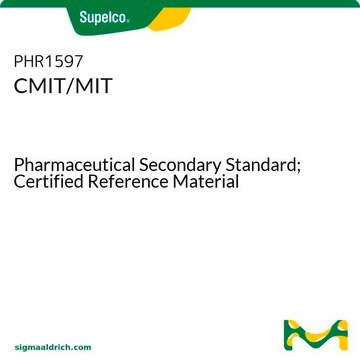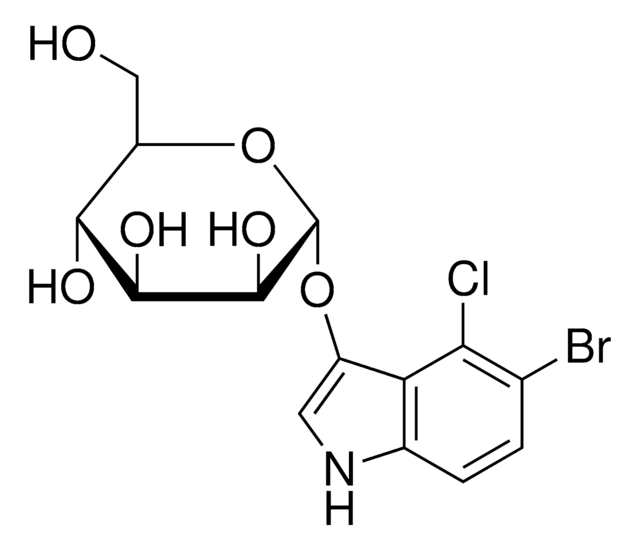Wichtige Dokumente
SBR00032
MIT HCl Ready Made Solution
(125-130 mg MIT HCl/mL in water)
Synonym(e):
2-Methyl-1,2-thiazol-3-one hydrochloride, Methylisothiazolinone hydrochloride
Größe auswählen
About This Item
Empfohlene Produkte
Form
liquid
Qualitätsniveau
Konzentration
(125-130 mg MIT HCl/mL in water)
Wirkungsweise
protein synthesis | interferes
Lagertemp.
2-8°C
InChI
1S/C4H5NOS.ClH/c1-5-4(6)2-3-7-5;/h2-3H,1H3;1H
InChIKey
SJXPQSRCFCPWQQ-UHFFFAOYSA-N
Suchen Sie nach ähnlichen Produkten? Aufrufen Leitfaden zum Produktvergleich
Allgemeine Beschreibung
Anwendung
- in research on the effects of the N-methyl D-aspartate (NMDA) receptor antagonist kynurenic acid on human cortical development [1]
- as a cytotoxic substance to investigate its effect on bronchial epithelial cells (BEAS-2B cells) and role in apoptotic cell death(2)
- to research the effects of tyrosine phosphorylation on focal adhesion kinase (FAK) activity in the development of neural axons and dendrites(3)
Leistungsmerkmale und Vorteile
- Ready available solution reduce the need for preparation time
- Commonly used in Cell Biology and Biochemical applications
- High quality antibiotic suitable for mulitple research applications
Sonstige Hinweise
Ähnliches Produkt
Signalwort
Danger
H-Sätze
Gefahreneinstufungen
Acute Tox. 4 Oral - Aquatic Chronic 2 - Eye Dam. 1 - Skin Corr. 1A - Skin Sens. 1
Zusätzliche Gefahrenhinweise
Lagerklassenschlüssel
8B - Non-combustible corrosive hazardous materials
WGK
WGK 3
Flammpunkt (°F)
Not applicable
Flammpunkt (°C)
Not applicable
Hier finden Sie alle aktuellen Versionen:
Analysenzertifikate (COA)
Die passende Version wird nicht angezeigt?
Wenn Sie eine bestimmte Version benötigen, können Sie anhand der Lot- oder Chargennummer nach einem spezifischen Zertifikat suchen.
Besitzen Sie dieses Produkt bereits?
In der Dokumentenbibliothek finden Sie die Dokumentation zu den Produkten, die Sie kürzlich erworben haben.
Active Filters
Unser Team von Wissenschaftlern verfügt über Erfahrung in allen Forschungsbereichen einschließlich Life Science, Materialwissenschaften, chemischer Synthese, Chromatographie, Analytik und vielen mehr..
Setzen Sie sich mit dem technischen Dienst in Verbindung.









